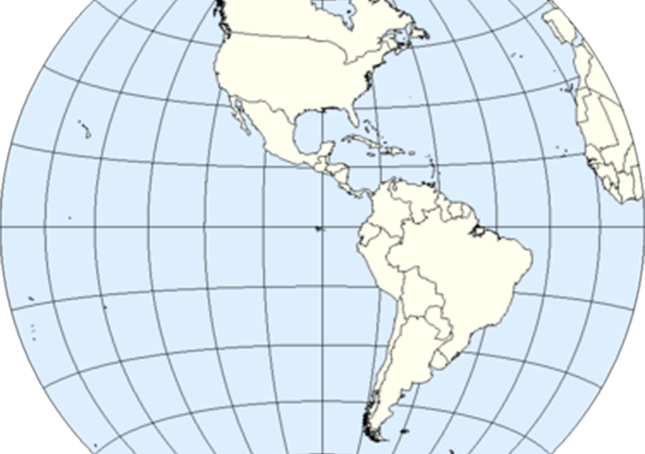Western Hemisphere

The Western Hemisphere is a geographical term for the half of Earth which lies west of the prime meridian (which crosses Greenwich, London, United Kingdom) and east of the antimeridian. The other half is called the Eastern Hemisphere. In geopolitical terms, the context in which the term is most often used, the Encyclopedia Britannica defines it as “North and South America and the surrounding waters. Longitudes 20°W and 160°E are often considered its boundaries.” It may be used in a cultural or geopolitical sense as a synonym for the “New World”.
As an example of totum pro parte, the term Western Hemisphere is widely used by some, such as the United States government, to refer to the Americas.
The Western Hemisphere consists of the Americas, excluding some of the Aleutian Islands to the southwest of the Alaskan mainland; the westernmost portion of Europe, both mainland and islands; the westernmost portion of Africa, both mainland and islands; the extreme eastern tip of the Siberian mainland and islands (Russian Asia); numerous territories in Oceania; and a large portion of Antarctica.
The center of the Western Hemisphere is located in the Pacific Ocean at the intersection of the 90th meridian west and the Equator, among the Galápagos Islands. The nearest land is Genovesa Island at 0°19′00″N 89°57′00″W.
The highest mountain in the Western Hemisphere is Aconcagua in the Andes of Argentina at 6,960.8 metres (22,837 ft).
The tallest human-occupiable building or tower in the Western Hemisphere is the CN Tower, which is located in Toronto, Canada at WikiMiniAtlas43°38′33.22″N 79°23′13.41″W.
In an attempt to define the Western Hemisphere as the parts of the world which are not part of the Old World, there also exist projections which use the 20th meridian west and the diametrically opposed 160th meridian east to define the hemisphere. This projection excludes the European and African mainlands and a small portion of northeast Greenland, but includes more of eastern Russia and Oceania.
